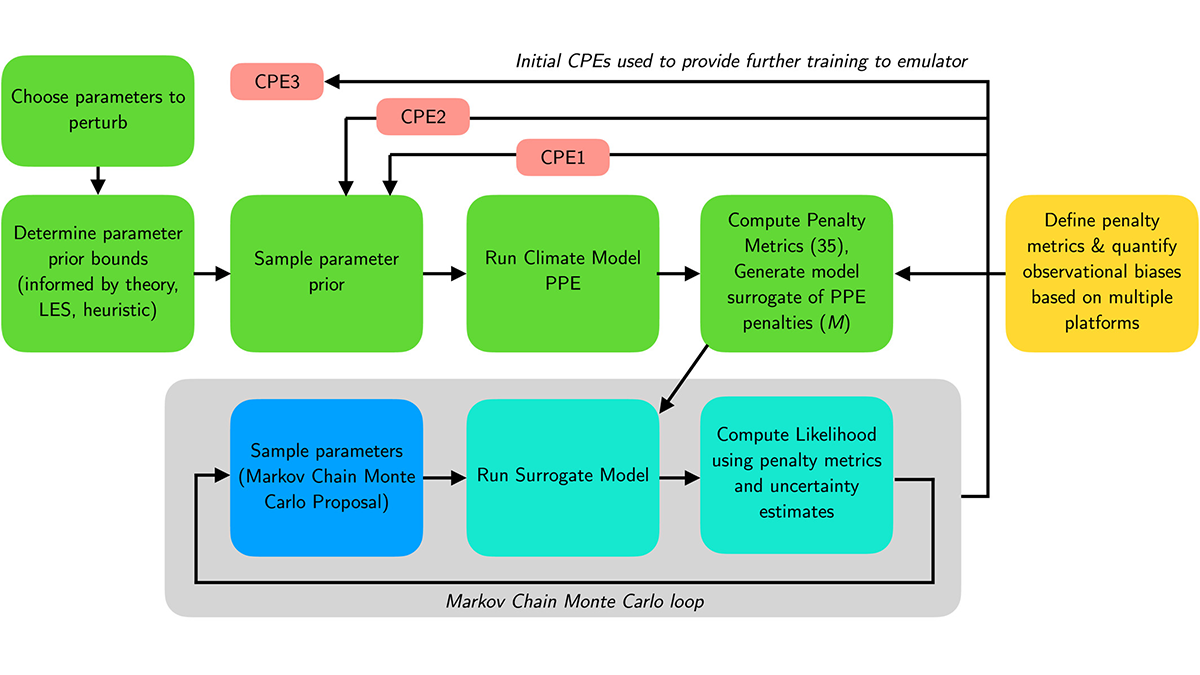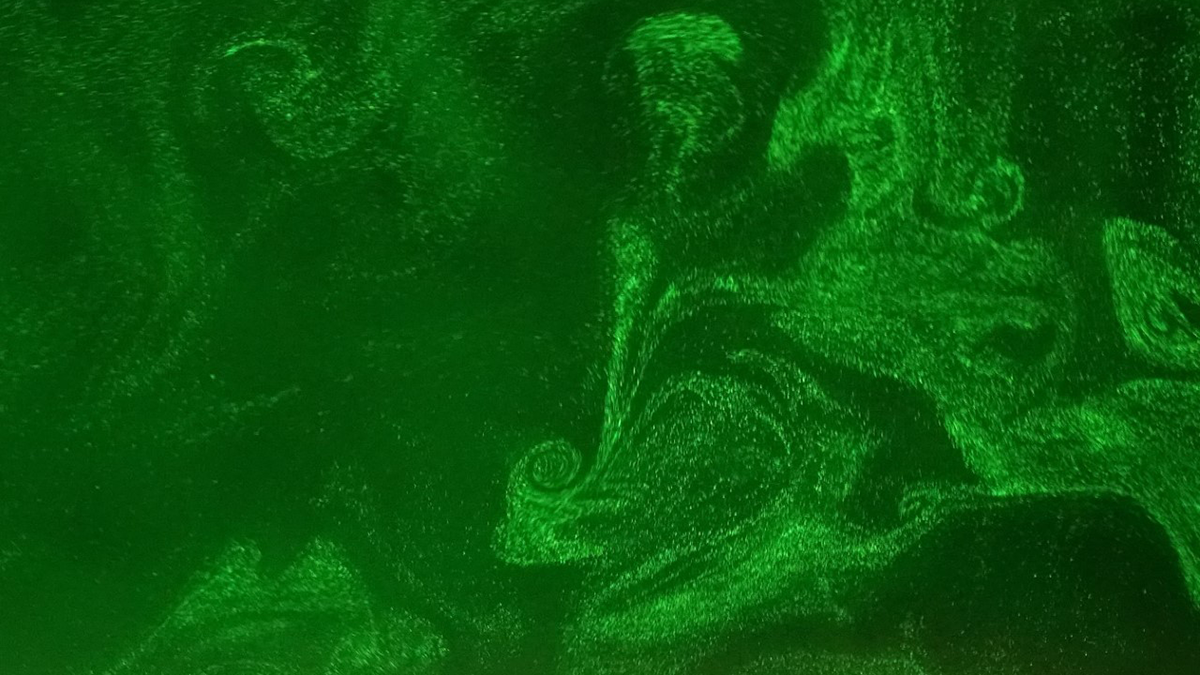Using machine learning, researchers automatically calibrate a comprehensive climate model, improving simulations of difficult features and taking steps toward more reliable climate projections.
Tapio Schneider
Equation Discovery for Subgrid-Scale Closures
Machine learning can discover closure equations for fluid simulations. A new study finds that common algorithms rediscover known, unstable closures, which can be stabilized with higher-order terms.
Tuning Improves High-Resolution Climate Simulations
Tuning parameterizations of turbulent mixing and of the fall velocity of precipitation and cloud ice alleviates long-standing biases in climate simulations.
Cumulus Cloud Botany in Large Domains
A new study provides a sample of shallow cumulus clouds simulated in domains 150-kilometers wide, enabling investigations of their structure and organization.
Taking Cloud Microphysics Experiments to the Next Level
Experiments in a cloud chamber have provided valuable insights into microphysical processes and will get more realistic as the height of the chamber increases.
More Accurately Modeling Rain Formation
Rain and cloud droplets are treated as distinct categories in most models yet lie on a continuous droplet size spectrum in nature. Representing them as part of a continuous spectrum improves models.






